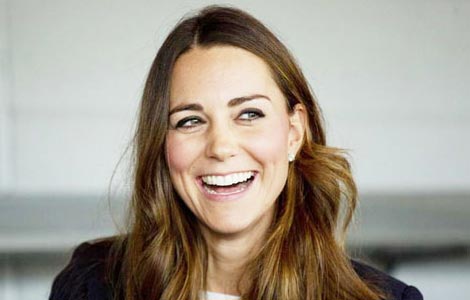Gallery director sees great value in traditional Chinese art
Updated: 2013-12-20 08:17
By Caroline Berg in New York (China Daily USA)
|
||||||||
Her presence was felt, without even being there.
"It was my pleasure to be her sidekick in this project," a Princeton University professor said about the director of the China Institute Gallery in New York during a recent lecture. "She really deserves 90 percent of the credit for this project, or maybe 95 percent."
The project was researching what would become the exhibition, Inspired by Dunhuang: Re-creation in Contemporary Chinese Art, now on display at the China Institute and the topic of the lecture given by Jerome Silbergeld, the P.Y. and Kinmay W. Tang professor of Chinese art history at Princeton and director of the university's Tang Center for East Asian Art.
"[Willow Weilan Hai Chang] opens our eyes to a whole new set of possibilities," the professor said about the gallery director. "It's not just that these are good works, it has to do with their interaction and their common source that makes us think and makes us think very differently about how art works."
The China Institute is in the midst of its Year of Dunhuang, which kicked off in April with the traditional art exhibition, Dunhuang: Buddhist Art at the Gateway of the Silk Road, and now its contemporary exhibition, on display until June 8, 2014.
"I've always been interested in old stuff," Chang told China Daily in her office this week, surrounded by stacks of papers and books. "So, from the beginning, I just think any contemporary show we do at the China Institute Gallery, we should have our own trademark, which is going back to the tradition."
Dunhuang, located in Gansu province in western China, is known for its more than 800 Mogao Caves that were carved out starting in 366 CE as places for Buddhist meditation and worship. In 2008, Chang made her first pilgrimage to the site.
"I think Dunhuang is really a best example to show traditions visually, because it has been around for thousands of years, and across different dynasties," Chang said. "From this location, I see many layers of traditions. I'm interested in its customs, religious practices, then the art you see from sculptures to paintings through thousands of years."
When the show of traditional Dunhuang art was proposed in the spring of 2009, Chang said her thoughts jumped on creating a second exhibition.
"Once the plans for the show were nailed down, I immediately thought we should include a contemporary show inspired by Dunhuang," the gallery director said. "Yet the challenge is, I got this idea, I'm very excited, but how to make it happen?" .
During the lecture, Silbergeld praised Chang for her courage in undertaking the project, which had not been researched fully before and held great risk of falling flat.
"The whole idea was hers, and a lot of us were looking at this kind of [contemporary] material without knowing what we were looking at," he said. "She's the one who decided to explore it, no doubt with the sense of its possibilities, and I it's very much a product of [Chang's] imagination and her sense of discovery to make this project happen."
Chang has been focusing on China's history at least since 1977, when she began her university studies in China and chose to major in archaeology.
"We have almost 6,000 years of artifacts, history and tradition," she said. "I think studying this history is a journey that will never end."
Chang taught archaeology in China before moving to the US 25 years ago. In 2000, she was named gallery director for the China Institute.
The institute was founded in 1926 by a group of Chinese and American educators, but the gallery didn't open until 1966. It was the first non-profit gallery to open in the US that regularly showcased Chinese art and culture exclusively. Now, the gallery presents two major exhibitions annually, and puts together traveling exhibitions, exhibition catalogs, and gallery tours through Discover China Through Art — an educational program for all age groups.
To date, the space has hosted more than 100 exhibitions in disciplines including calligraphy, painting, ceramics, bronzes, decorative art, folk art, architecture, photography, textiles, and contemporary art covering Chinese history from the Neolithic period to present day.
"It is really a great joy for me to do this [job]," Chang said. "It's what I consider as a mission, which is to share whatever I've learned and whatever I'm passionate about — art — to share with people."
Chang said because she herself is an artist — a painter and a calligrapher — she is very discerning of what is put on display in the gallery, particularly when it comes to Chinese contemporary art.
"For a long time, I didn't see much good [contemporary] artwork out there," Chang said and giggled. "Maybe I have my own standard."
Chang said she also creates common threads for the exhibitions to link all the art together.
"I always try to find an angle a perspective to introduce the contemporary art, instead of just having a bunch of artists and throwing their work up," she said. "I think each exhibition must have a meaning."
Looking ahead, Chang said 2015 will be the year of six dynasties, from the 3rd to 7th centuries.
"That is one of the most dynamic periods in Chinese history," she said. "I don't know if you can use the word ‘Renaissance,' but this period set up a lot of disciplines, principles in art, in literature, and that influence has been passed down through the generations."
Meanwhile, the Year of Dunhuang will continue with more programs to help make the current exhibition more meaningful and educational for visitors, Chang said.
"The show is really about inspiration, creation, and we cannot neglect our great tradition," she said. "I think we [Chinese people] need to regain our confidence from our great tradition. Basically, this is the purpose of the show."
Contact the writer at carolineberg@chinadailyusa.com

 Post-baby Duchess
Post-baby Duchess
 Victoria Beckham S/S 2014 presented during NYFW
Victoria Beckham S/S 2014 presented during NYFW
 'Despicable' minions upset Depp's 'Lone Ranger' at box office
'Despicable' minions upset Depp's 'Lone Ranger' at box office
 'Taken 2' grabs movie box office crown
'Taken 2' grabs movie box office crown
 Rihanna's 'Diamonds' tops UK pop chart
Rihanna's 'Diamonds' tops UK pop chart
 Fans get look at vintage Rolling Stones
Fans get look at vintage Rolling Stones
 Celebrities attend Power of Women event
Celebrities attend Power of Women event
 Ang Lee breaks 'every rule' to make unlikely new Life of Pi film
Ang Lee breaks 'every rule' to make unlikely new Life of Pi film
Most Viewed
Editor's Picks

|

|

|

|

|

|
Today's Top News
China rejects US GM corn shipment
China, US start annual trade talks
New York mulls banning e-cigarettes
Verizon plans more data-request disclosures
88 injured in London theater collapse
'Deportation relief' important to Asian Americans
Reading China's future through its past
New US ambassador 'must find right mix'
US Weekly

|

|







